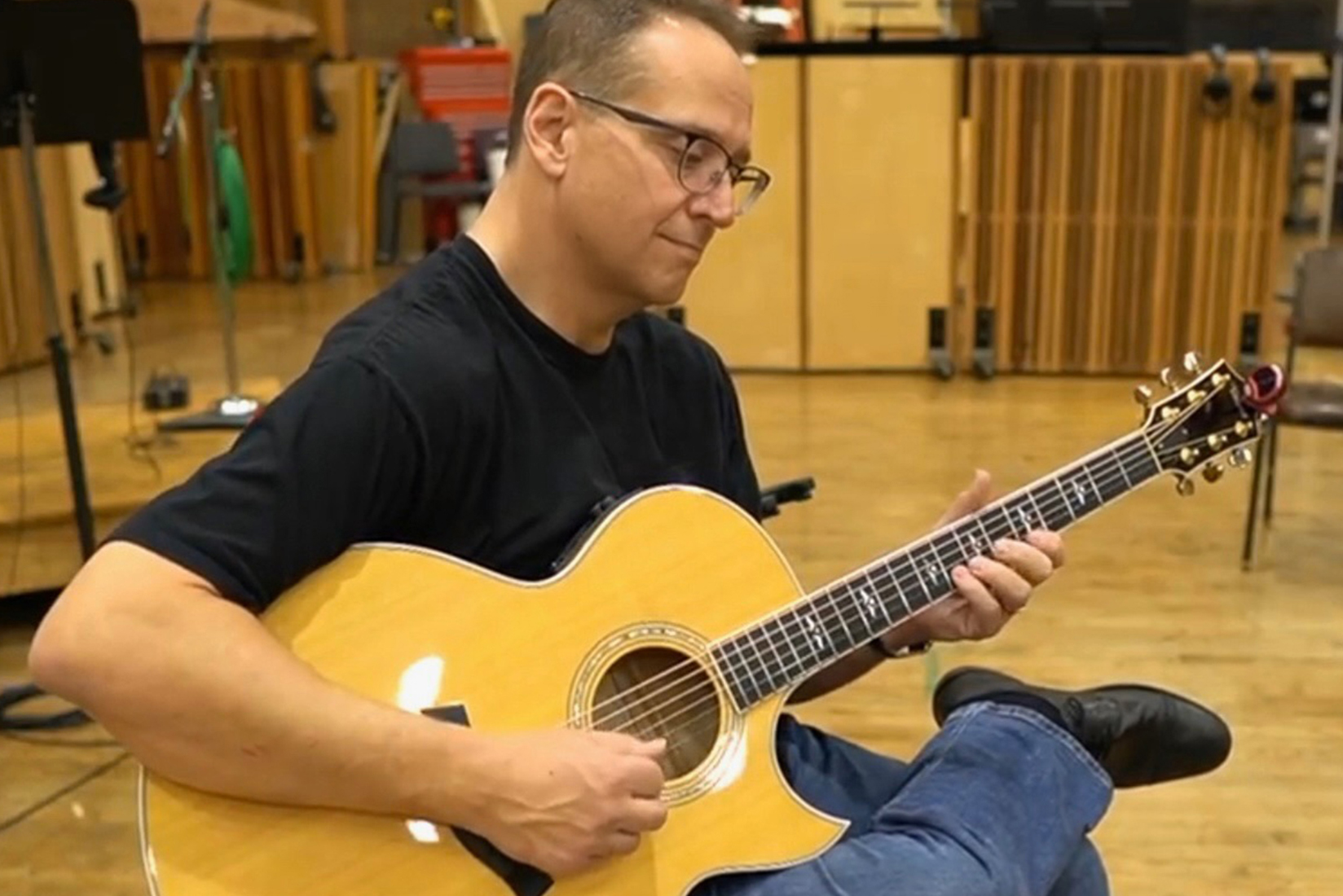The Guitar Tool Box is a concept that I came up with after years of working in Los Angeles studios on countless film, TV, video game and record sessions. I have distilled down for you a tool box of interrelated chords, scales, and a concept of the fingerboard that is both direct and easily accessible anytime you need it, without having to do mental gymnastics to order to apply the concept in the real world. This applies to any style, in any situation, and allows you to sound good consistently every time you play the guitar.
I came up with this concept because I needed a simple, direct way to conceive of the guitar when in “the heat of battle” while in the recording studio. I got tired of concepts that required numerous steps to relate to one another. I wanted a concept much like a piano player where you would see the notes in front of you and combine them together confidently and quickly. The first thing I needed was a simple, reliable way to see all the note possibilities on the fretboard, just like on the piano. As I worked out this system, I discovered the “Heart of the Guitar” to be strings 2, 3 & 4 or the B,G & D strings. Why? I found myself getting the most consistent sound and best blend in the mix when using this set of strings as a default home base from which everything else I needed on a consistent basis could be built.
As guitar players, we all know that the fingerboard can be a bit of a jungle to navigate. This is where we will start to get to the Heart of the Guitar.
“Navigating the Fretboard Jungle”
I wanted every aspect of the Guitar Tool Box concept to be simple and easy to unpack anytime you need it. The first thing we have to understand is the tuning of the guitar. What we inherited is an instrument that, because of the pitch relationships from string to string, makes it relatively easy to play what you learn in one position in all positions. This is the case both in the closed and open chord voicings, as well as scales, and the ability to move them up and down the neck to all keys. The downside is that because of the tuning and pitch duplication from string to string, there are multiple places on the instrument to play the same note(s).
A quick aside about pitch versus note. A pitch is a sound we hear, and note is what we read on a page of music.
For instance, there are twelve places (on a 22 fret instrument) to play the note “E” in all octaves within the guitar’s range.

– Next time on “The Guitar Tool Box” more on Navigating the Fretboard Jungle and the concept of String Transfer.




Keep on working, great job!